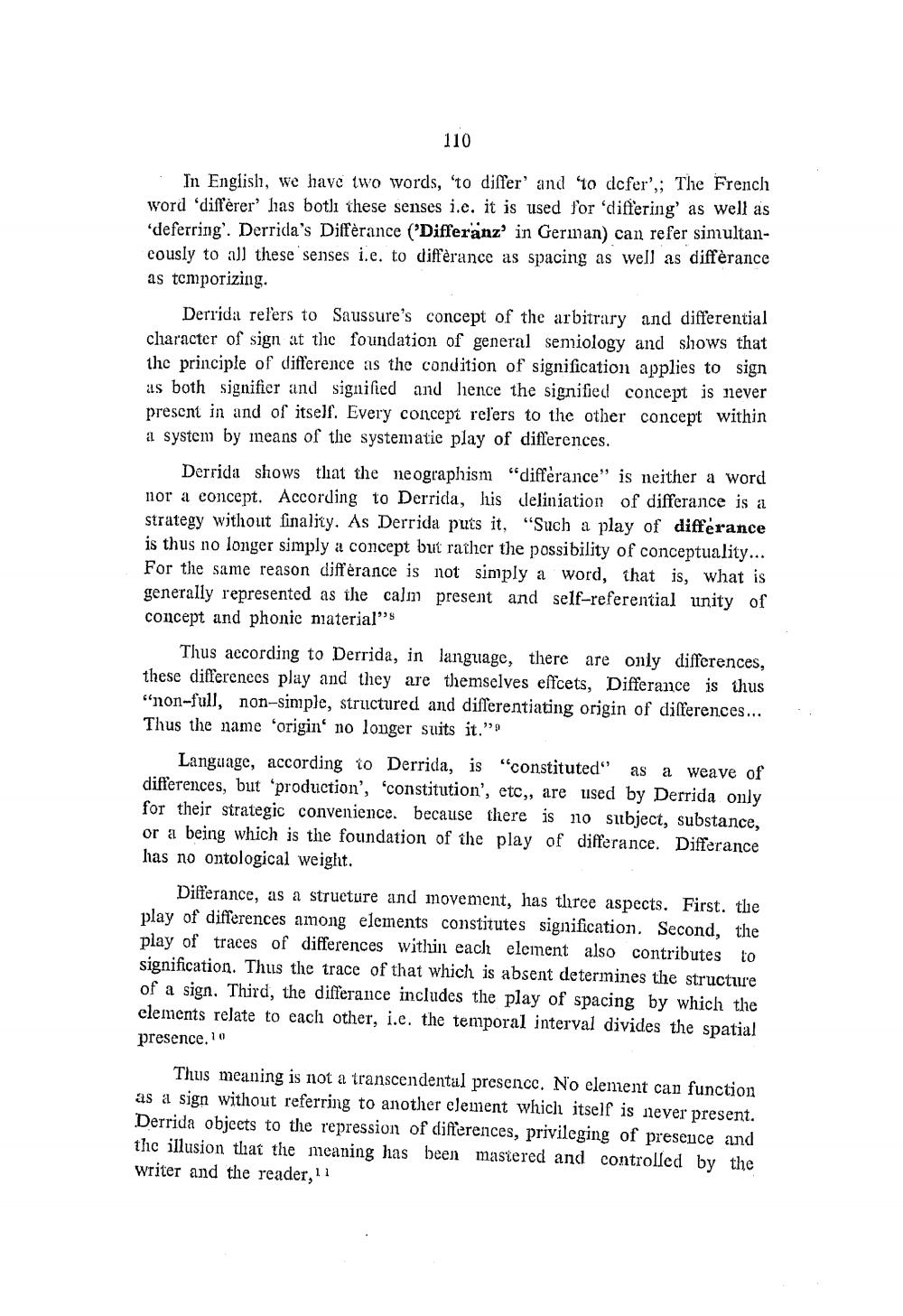________________
110
In English, we have two words, to differ' and '10 dcfer',; The French word 'diffèrer' has botli these senses i.e. it is used for differing as well as 'deferring'. Derrida's Diffèrance ('Differanz' in Gerinan) can refer simultancously to all these senses i.e. to diffèrance as spacing as well as diffèrance as temporizing.
Derrida refers to Saussure's concept of the arbitrary and differential character of sign at the foundation of general semiology and shows that the principle of difference as the condition of signification applies to sign as both signifier and signified and hence the signified concept is never present in and of itself. Every concepi rel'ers to the other concept within a system by ineans of the systematic play of differences.
Derrida shows that the neographism "differance" is neither a word nor a concept. According to Derrida, his deliniation of differance is a strategy without finality. As Derrida puts it, "Such a play of differance is thus no longer simply a concept but rather the possibility of conceptuality... For the same reason différance is not simply a word, that is, what is generally represented as the calm present and self-referential unity of concept and phonic materials
Thus according to Derrida, in language, there are only differences, these differences play and they are themselves effcets, Differance is thus snon-full, non-simple, structured and differentiating origin of differences... Thus the name 'origin' no longer suits it."
Language, according to Derrida, is "constituted as a weave of differences, but 'production', 'constitution', etc,, are used by Derrida only for their strategic convenience. because there is no subject, substance, or a being which is the foundation of the play of differance. Differance has no ontological weight.
Differance, as a structure and movement, has three aspects. First, the play of differences among elements constitutes signification. Second, the play of traces of differences within each element also contributes to signification. Thus the trace of that which is absent determines the structure of a sign. Third, the differance includes the play of spacing by which the elements relate to each other, i.e. the temporal interval divides the spatial presence.10
Thus meaning is not a transcendental presence. No element can function as a sign without referring to another element which itself is never present. Derrida objeets to the repression of differences, privileging of presence and the illusion that the meaning has been mastered and controlled by the writer and the reader, 11




